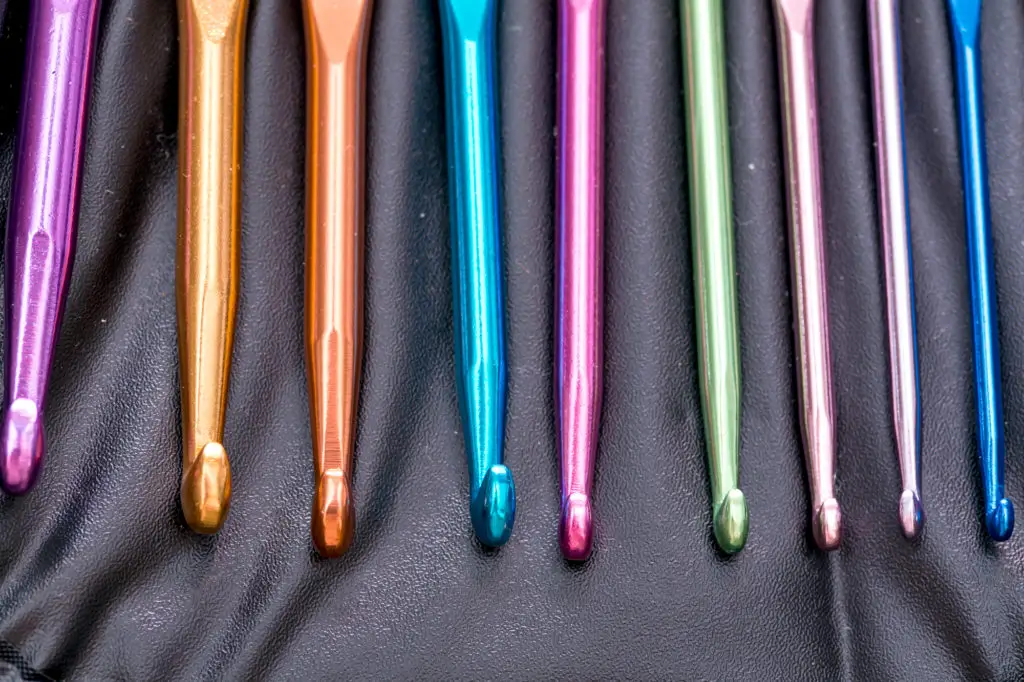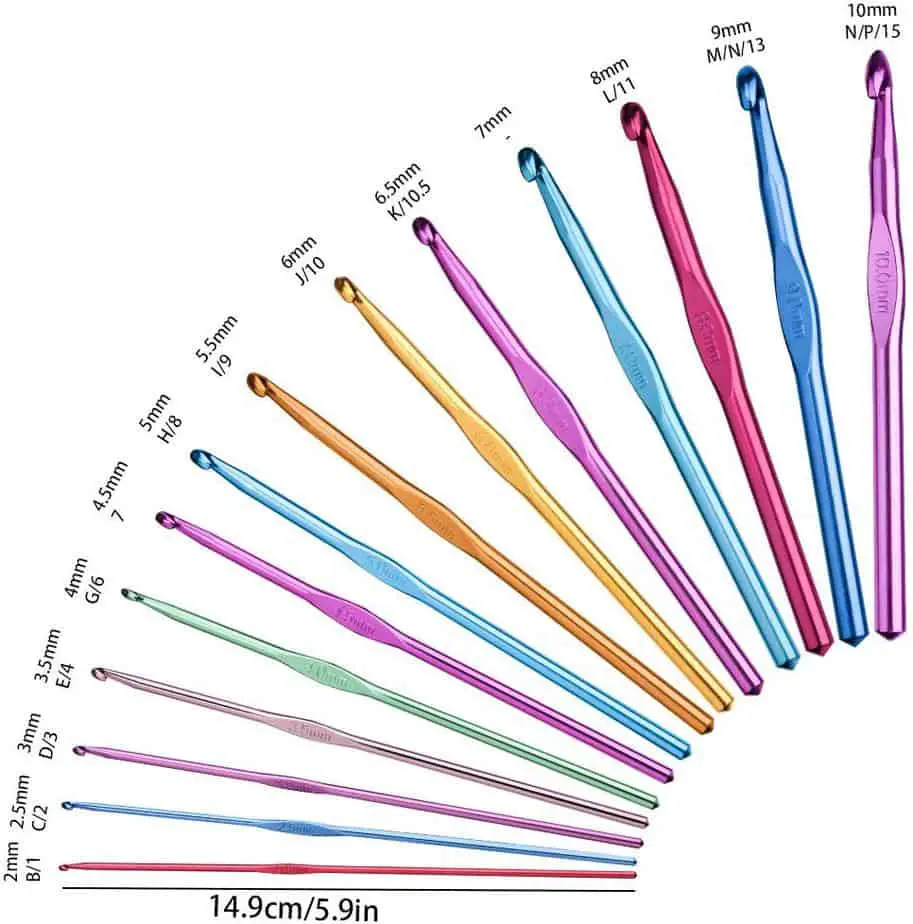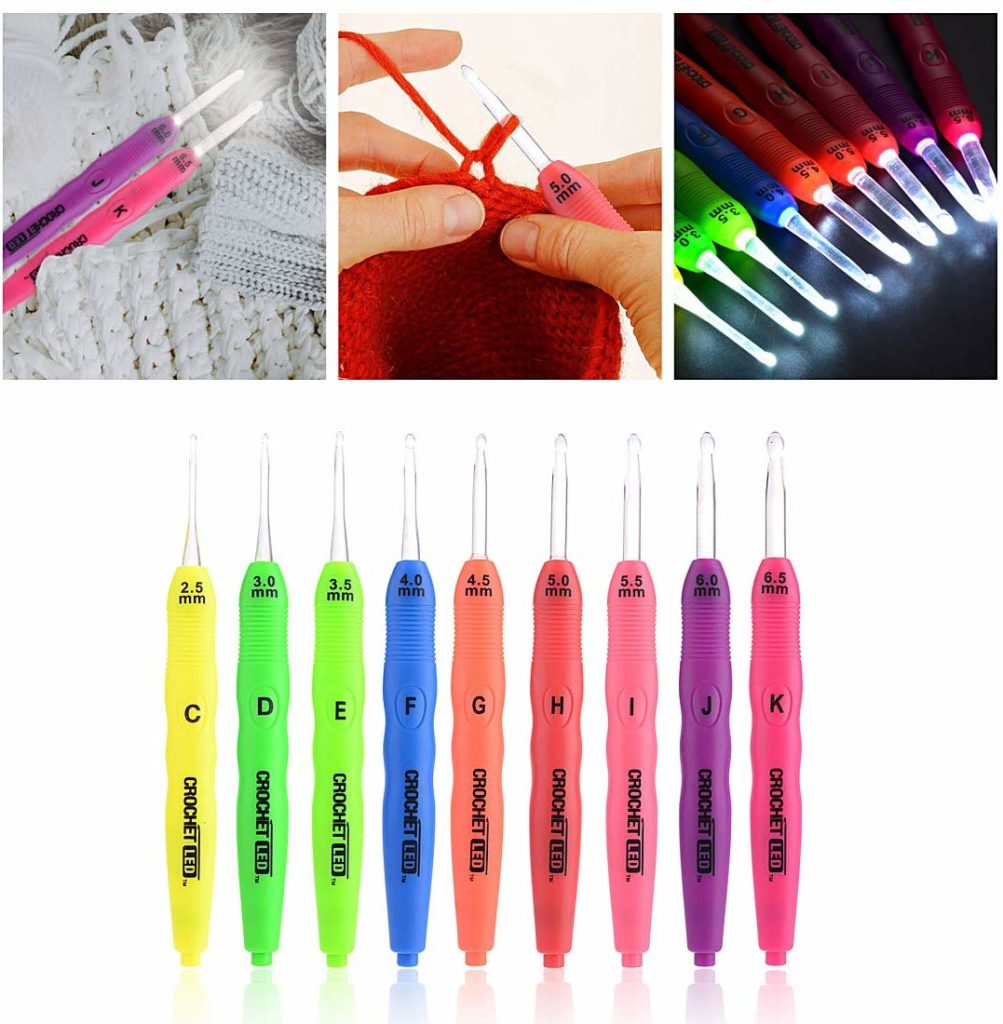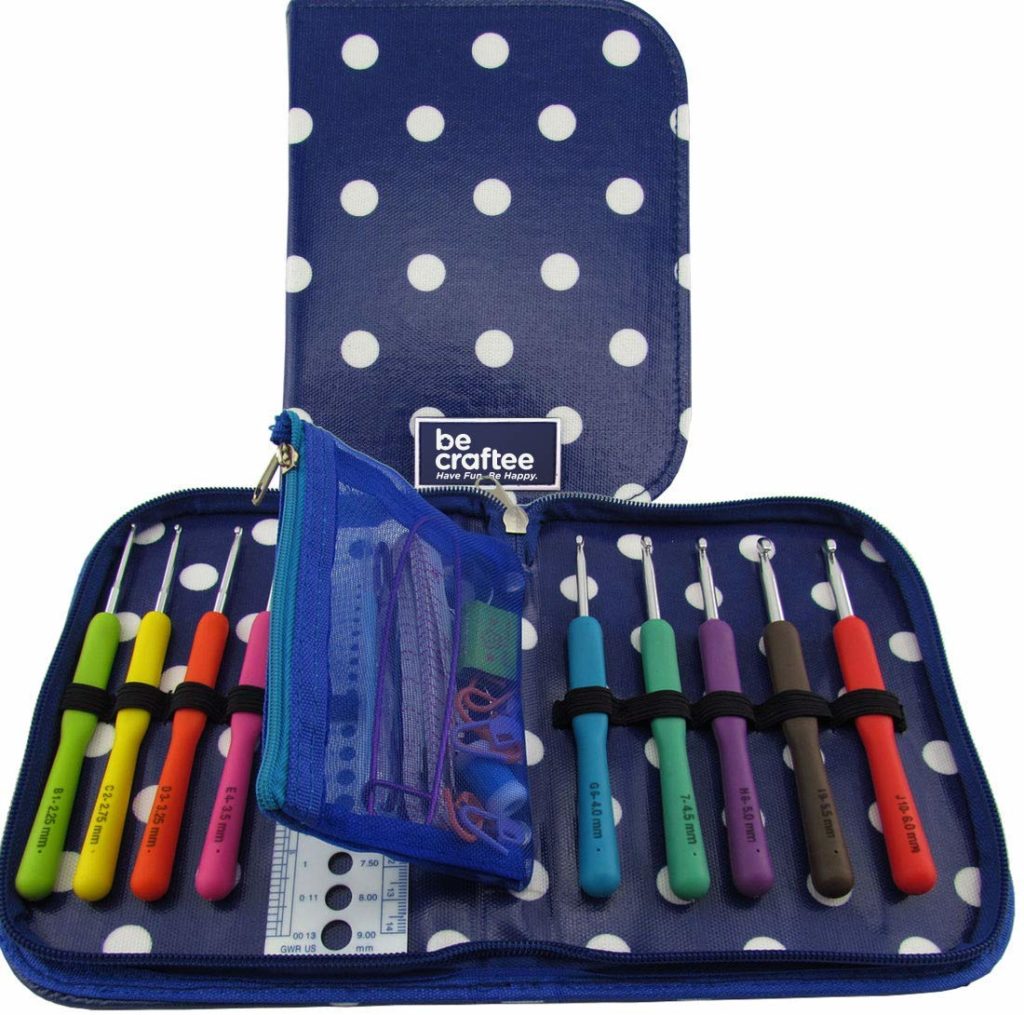How Do I Choose The Right Crochet Hook For My Project?
Beginning to crochet leaves many interested in the hobby confused about what type of crochet hook to use. As these people continue to crochet, they learn that there really are certain types that work better for them and their projects. Using different types, sizes and anatomies of crochet hooks will greatly assist any novice crocheter in making their best project yet.

But how do I know which crochet hook to use?
To start, it is important to note that there are different types of hooks for different types of projects, patterns, and needs. Secondly, there are many different sizes of crochet hooks proving that yes, sometimes, size matters. Finally, there are different ways in which crochet hooks are made assist you in making the best project yet.
Types of Crochet Hooks
The most common type of crochet hook is the basic hook for any beginner crocheter utilizing yarn. They come in a variety of sizes, which will be discussed later, and a variety of materials. The basic type of crochet hook also can be bought as a tapered or inline hook. Any novice will find these hooks sold in most major retailers selling craft supplies.
The thread crochet hook is made for individuals who want to use thread rather than yarn. This means that the hook, as you can imagine, is significantly smaller than the basic crochet hook. The thread hooks are numbered by size and are made of steel to prevent bending.
Ergonomic crochet hooks are made for crocheters who may have painful conditions that make basic crochet hooks uncomfortable. This could include if you suffer from ailments such as arthritis or carpal tunnel. The grip on the ergonomic crochet hook is much larger, making crocheting much easier.
Believe it or not, there are also light-up crochet hooks. These crochet hooks are made for the night owls who do not want to disturb the rest of the house by turning on lights. They are just like basic crochet hooks, except for lighting up right at the tip.
Tunisian crochet hooks are made for a specific type of pattern that has stitches that are much different than basic crochet. You may find these hooks under the name of Afghan crochet hooks as well. The hooks either have a head on each end or have two hooks connected by a cable, each with one head.
A knook is another kind of crochet hook that will be mentioned. This type also allots for a different pattern than a basic crochet pattern in that it leaves a knit like pattern. The knook does look like a basic crochet hook except for a small hole in one end for the stitch to be threaded through.
Sizes of Crochet Hooks
As you may be able to tell from the various types of crochet hooks, hook size varies greatly. There are tiny hooks that thread can pass through, all the way to extremely large hooks as big as your arm. You will be able to tell the size of a hook by either the letter or by the number which demonstrates their sizes in millimeters, but this is all dependent on your location.
Yarn size has a lot to do with the size of hook you want to use. A larger yarn will, naturally, need a larger hook. A very small yarn, you guessed it, will need a smaller hook if you are looking for a tightly crocheted pattern.

Size one is the smallest type of yarn that will need the smallest hook. Yarn sizes go all the way up to size six, which will require the largest size crochet hook. Size four, the most popular yarn size, will be what you will see most commonly in crochet patterns; can you guess what size hook it will need?
The larger the yarn and larger the hook, the larger your project will end up being. Even if the same pattern is used with different sized yarn and hooks, there will be a visible difference in the final result. Again, the smallest yarn and smallest hook size provides the smallest result as well.
A Crochet Hook’s Anatomy
The head and throat of the crochet hook are one of the first things that many crocheters have a preference of. As mentioned previously, hooks can either have a tapered or an inline look. Neither is better than the other, but many crocheters do have a preference.
Tapered hooks have a rounded head, and the head does not line up with the body of the hook. An inline hook has a flat throat and a more pointed head that does line up with the body of the hook. Again, the type used is up to your preference.
The shaft, or body, of the hook is what determines the size of the hook. The entire hook has to pass its diameter through the project. The size of the diameter is what determines the size of the hook.
The grip and handle are also both very important to each individual crocheter’s preferences and needs. The grip is where the thumb rests when crocheting. The handle is where the hook is held by the rest of your hand.
As we mentioned previously, many individuals with medical concerns may prefer an ergonomic grip that is comfortable for their hands. Others utilize a rubber grip. If the grip is not suited right for you, however, the handle will also be very uncomfortable.
The entire anatomy of a hook is made of different materials as well. These materials you should think carefully about depending on the type of project you are doing. The material of your hook works differently with different types of yarn.
Most crochet hooks are made of aluminum and plastic. There are also rubber, glass, bamboo, steel and plastic hooks. The latter types sometimes do slide more easily if a slippery yarn is being used, so this is something important to consider.
In Conclusion
As you can see, there are many variables to consider when beginning your next crochet hook. Do not forget to pay attention to the size and anatomy of your hook to ensure comfort and effectiveness. Be sure your pattern does not require a specific type of hook as well and enjoy your next project.

